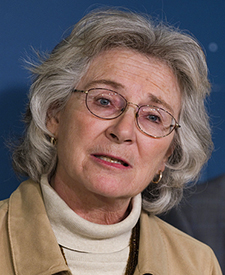Wanting to provide added resources and leadership to addressing health inequities, the Minnesota Department of Health (MDH) recently created a Health Equity Bureau, hiring Brooke Cunningham, a general internist, sociologist and former assistant professor at the University of Minnesota, to lead the effort.

“And then along comes the pandemic, which has both made some of the inequities more visible and also worsened them in many respects at the same time.”
Health inequities, seen in everything from infant and maternal mortality to the disproportionate impacts of substance abuse, cut across different populations and communities. Because of the widespread impact, it required MDH to take a more individualized approach to each issue and community, Malcolm said.
While MDH has previously had initiatives around eliminating health inequities, the bureau is part of MDH’s effort to put more resources toward addressing the issue. Cunningham’s role will allow MDH to take a better look at the many conditions in people’s environments that affect their health and to create concrete plans to address them.
Malcolm thought Cunningham would be perfect for the role because of her unique perspective as a sociologist and a doctor. “When it comes to health equity, differential access to medical care is a part of the issue, but it’s only a part of the issue,” said Malcolm. “The deeper issue is inequitable distribution of opportunity around the social determinants of health, which is way more of a sociology thing than a clinical thing.”

She has been a health disparities researcher and a general internist primary care provider. Most recently, she was a full-time faculty in the University of Minnesota’s Department of Family Medicine and Community Health.
“I am someone who has a longstanding interest in addressing racial inequities. I decided to focus on closing gaps through health equity research and through primary care,” Cunningham said.
Having grown up in Richmond, Va., Cunningham observed systematic patterns of racial disparities, patterns that still exist in Minnesota, she said.
“Many parts of the city are still highly segregated,” she said. “With the dynamics of redlining and segregation are the dynamics of resources. Resources are the things that create healthy neighborhoods. Resources are the things that lead to food security versus food insecurity. Resources and funding structures affect the quality of our education. All of those upstream determinants are similar and are patterns across the country. The pattern of resource distribution is not arbitrary; it’s racialized, given the history of racial relations and policies in our country.”
As an assistant professor at the University of Minnesota, Cunningham has tried to teach future doctors to think about adapting health care delivery to consider inequities that lead to the patients sitting before them. The bureau will give her a larger platform to do so.
“The purpose of the bureau is really to help amplify and coordinate efforts around health equity,” she said. “It is not new work to the bureau, but it’s a greater emphasis, particularly to have someone in leadership who can keep coming back to the equity issues and to be at the table when important conversations go on.”
So far, she has been working with COVID data and equity strategies, looking at gaps by race and ethnicity in terms of getting people up to date with their vaccinations.
Addressing circumstances like environmental pollution or poor access to transportation that often lead to health inequities is on the top of her to-do list. While she knows about the issues many communities face, like chronic disease outcomes and gun violence, she wants to prioritize meeting with community groups to hear about the problems they’re facing.
“I see many of the ways in which those upstream factors, like neighborhoods that people live in, educational opportunities, employment opportunities, policies … affect (people),” she said. “I think it’s important for leaders to have the courageous conversations, ask the tough questions, develop messaging both internal and external and to listen.”


0 Commentaires